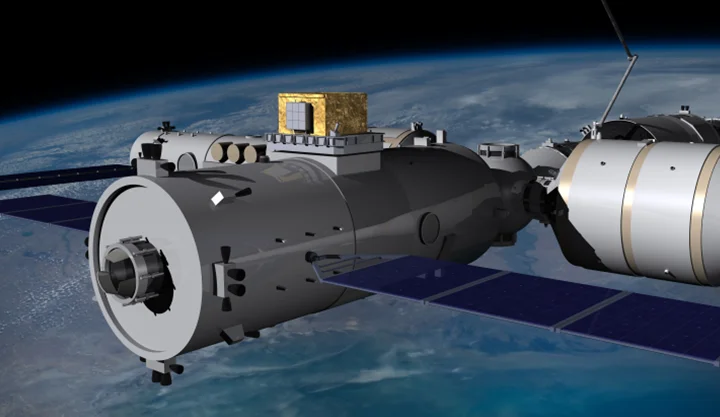HERD


Future module of the Chinese Space Station that will study dark matter, cosmic rays and high-energy gamma rays

The HERD (High Energy cosmic-Radiation Detection) mission is an experiment being built to become one of several space astronomy payloads to be carried on board the future China's Space Station (CSS). It is scheduled to be launched around 2027, separately from the space station, and will be installed through a combination of robotic and spacewalk activities. Once installed, HERD will be a permanent part of the station, mounted in a zenith orientation (i.e. facing upwards away from the Earth), with an expected lifetime of 10 years.
The main scientific objectives of HERD are to serve as a dark matter detector with unprecedented sensitivity; as an instrument to accurately derive the spectrum and composition of cosmic rays down to energies of the 'peta-electron volts’ (1 PeV = 1015 eV), whose origin is still unknown; and as an observatory to monitor high-energy gamma rays, with an almost complete field of vision. The instrument can be upgraded or, if necessary, replaced during its lifetime.
THE IEEC CONTRIBUTION
The IEEC is involved in the HERD mission both at the hardware development level (detectors and electronics of part of the module components) and at the preparation and exploitation of the scientific data level. The IEEC has developed the BETA ASIC (a type of integrated circuit) for the readout of two HERD subsystems and has worked to significantly expand the sensitivity for the detection of gamma rays between 10 MeV and 10 GeV.
Although the main objective of the mission is the study of cosmic rays, it is expected that HERD will also be used to carry out research in the field of gamma-ray astronomy, and it is precisely in this field that the IEEC is involved in the mission from a scientific point of view. Stationary gamma-ray sources will be studied, such as microquasars, pulsar nebulae, or gamma-ray binaries. The High Energy Astrophysics group at the University of Barcelona has a recognised expertise in the theoretical and phenomenological study of these systems. HERD will be able to test the models and predictions made for these sources, which will provide new clues to understanding the physical processes responsible for their emission in the gamma range.
